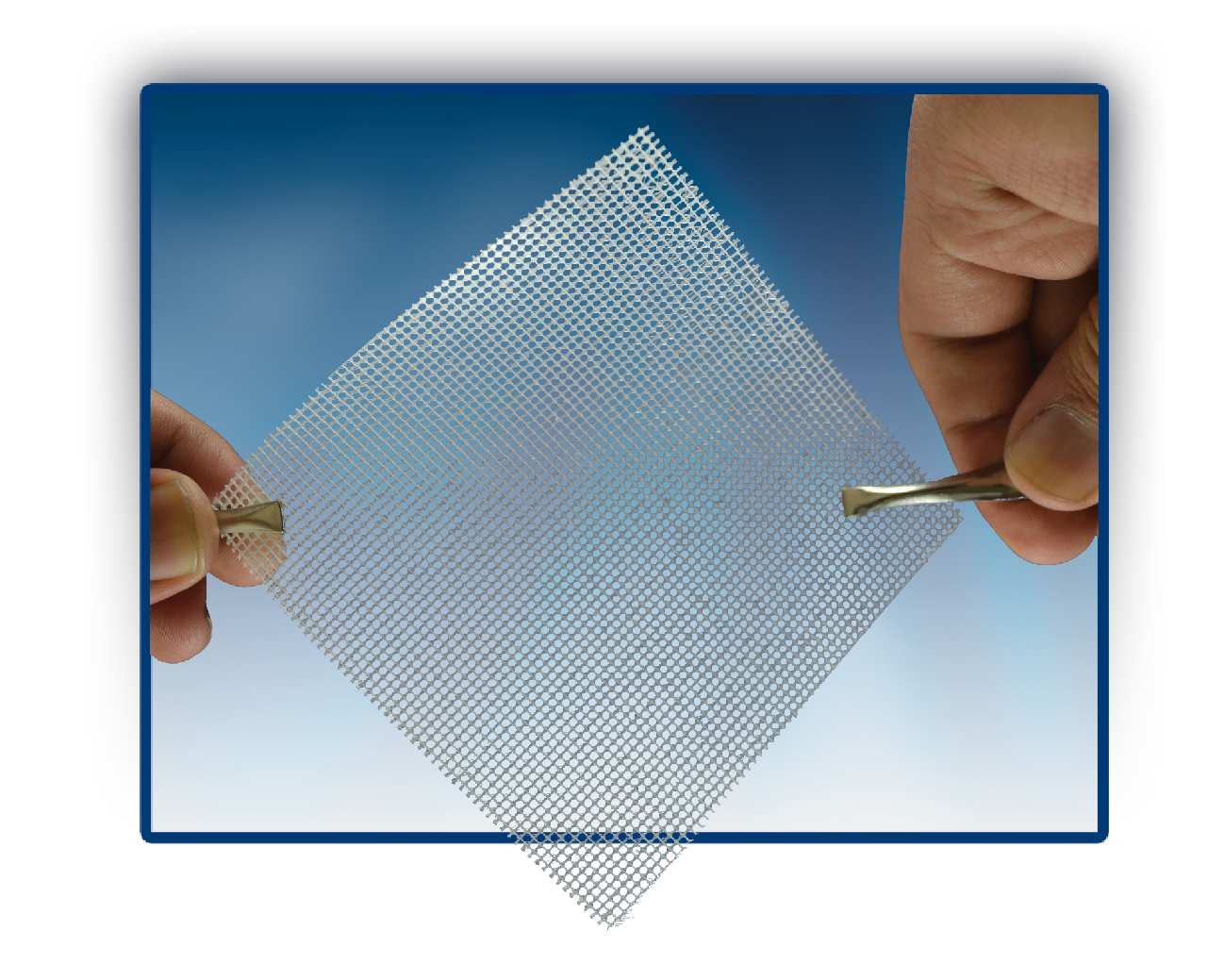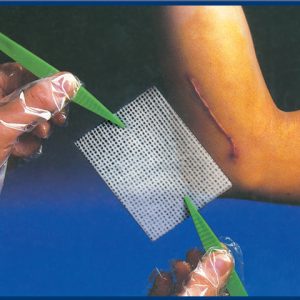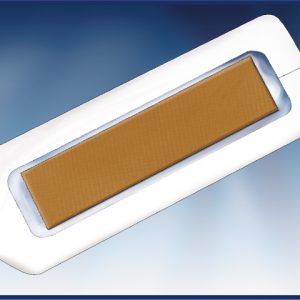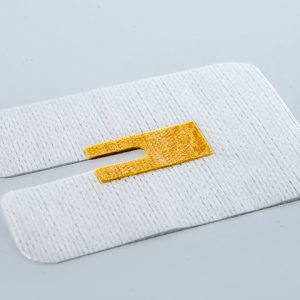Descrizione
InfoProdotto
Pharmajelly Net Ag è uno strato lipo-colloidale non aderente, antimicrobico a contatto con la ferita.
Pharmajelly Net Ag is composed of polyester mesh impregnated with superabsorbent powder and petrolatum and containing silver that renders the dressing antimicrobial against wide range of microorganism including Gram-negative bacteria such as Escherichia coli and Pseudomonas aeruginosa; Gram-positive bacteria such as Staphylococcus aureus, MRSA and VRE; and fungi such as Aspergillus niger and Penicillium nigricans.
1- Broad spectrum and continuous antimicrobial protection: due to the presence of silver which inhibits growth of bacteria, yeast and fungi. Subsequently, it prevents colonization of bacteria on the dressing or at the wound site.
Pharmajelly Net Ag release of silver is highly controlled, they are rarely eluted out with wound exudates, that’s why it may remain in place for several days, depending on wound condition.
2- 2- Sicurezza: Superabsorbent particles absorb exudates and turn to gel. This allows easy removal without pain or trauma. Soft paraffin also shows non-adherent effect which synergizes with superabsorbent powder action.
3- Ambiente di guarigione ottimale: Superabsorbent particles gel upon absorption of wound exudates. This provides moist environment which enhances wound healing.
Pharmajelly Net Ag is indicated for management of non to low exuding wounds at the granulation and epithelization phase that are at high risk of infection as: Burns, traumatic wounds, abrasions, post-operative wounds, leg ulcers, pressure ulcers, diabetic foot ulcers, epidermolysis bullosa, skin grafts and donor sites.
- Cleanse the wound as per local procedures, then rinse with saline solution.
- Dry the surrounding skin carefully.
- Pharmajelly Net Ag can be cut to fit the wound area and shape, if required.
- Choose a dressing which is slightly larger than the wound.
- Remove the dressing’s protective liner.
- Apply the dressing in intimate contact with the wound base, ensuring the entire surface is covered.
- Cover with a secondary dressing suitable for the level of wound exudate.
- Then cover with an appropriate retention bandage. The retention bandage shouldn’t be occlusive, so as not to hinder breathability of the dressing.
- Generally the dressing could left in place up to 7 days, depending on exudates level and clinical condition of the wound.
- For Epidermolysis bullosa patients, the dressing should be changed every 1 to 3 days.
- To remove Pharmajelly Net Ag, use tweezers, forceps or a gloved hand to gently lift the dressing away.
- Pharmajelly Net Ag can adhere to Latex surgical gloves, so it’s preferred to moisten the gloves with saline or use sterile tweezers to facilitate handling of the dressing.
- In caso di utilizzo di Pharmajelly Net Ag in ferite profonde o fistole, una parte della medicazione deve essere lasciata visibile per consentire una facile rimozione.
- Prima e dopo l’uso di radioiodio.
- Il prodotto è un dispositivo monouso, il riutilizzo può comportare il rischio di infezione.
- Non risterilizzare
- Non utilizzare in una camera iperbarica.
- Nelle donne incinte e che allattano al seno.
- Non utilizzare medicazioni per ferite contenenti iodopovidone (PVP-I) in pazienti con sensibilit nota allo iodio o a uno dei componenti.
- L'uso su donne in gravidanza, allattamento, neonati e neonati è controindicato in assenza di specifiche informazioni cliniche.
- Evitare il contatto con elettrodi o gel conduttori, durante le misurazioni elettroniche (EEG, ECG).
- Non utilizzare su pazienti sottoposti a risonanza magnetica (MRI).
- Pharmajelly Net Ag can adhere to Latex surgical gloves, so it’s preferred to moisten the gloves with saline or use sterile tweezers to facilitate handling of the dressing.
- In caso di utilizzo di Pharmajelly Net Ag in ferite profonde o fistole, una parte della medicazione deve essere lasciata visibile per consentire una facile rimozione.
- Prima e dopo l’uso di radioiodio.
- Il prodotto è un dispositivo monouso, il riutilizzo può comportare il rischio di infezione.
- Non risterilizzare
- Non utilizzare in una camera iperbarica.
- Nelle donne incinte e che allattano al seno.
1-Damage to bacterial cell membrane, could lead to the leakage of cytoplasm from the cell, which would result in dehydrated and shrunken cells.
2- Silver atoms bind to thiol groups (-SH) in enzymes, and subsequently, cause the deactivation of enzymes.
3- Silver associates with DNA once they enter the cell, thus preventing bacterial cell replication.









Recensioni
Ancora non ci sono recensioni.